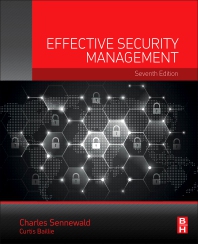Happy New Year! We have turned the calendar to 2019, but the New Year doesn’t take away security risks, and according to one survey, workplace violence, marijuana use and cybersecurity will be at the top of the list.
An XpertHR survey found that 45 percent of respondents viewed preparing for and responding to an active shooter or workplace violence incident as very or extremely challenging. A noted concern was creating a “culture of safety in the workplace.” This can include preventing actual acts of violence such as a shooting, as well as threats of violence, such as stalking which may arise in connection with domestic violence.
The best way to address the issues, says the survey, is to put policies in place for visitor safety, workplace violence prevention, domestic violence and banning weapons from the workplace, to the extent permissible by state law. Safety and security audits should also be done to identify and correct gaps in workplace safety and security, background screen applicants, look out for any red flags indicating potentially violent behaviors and create a zero tolerance workplace violence prevention program.
Another perplexing and challenging issue this year? Dealing with increasing marijuana use. Medical marijuana is legal in approximately 30 states and recreational marijuana use is now legal in more than 10 states including the District of Columbia. Notwithstanding this, marijuana remains classified as a Schedule I controlled substance and illegal under federal law.
XpertHR’s survey and Beth Zoller, JD, Legal Editor, XpertHR, also found that employee privacy and protecting confidential data in the workplace are critical issues for 2019. You will be challenged by preventing cyber breaches and data security, managing mobile devices/wearable technology and the internet of things, managing the use of technology and social media while at work and protecting employee information from data breaches.
Security magazine: The survey confirmed frustrations with addressing marijuana use and attempting to maintain a safe and drug free workplace. What should employers do in this area, in light of rapidly changing laws?
Beth Zoller: Despite the fact that more and more states are legalizing marijuana for medical and recreational purposes, it is still critical to maintain a drug-free workplace. An employer can do this by:
- Making sure it has the proper policies in place including, but not limited to, drug testing policies, disciplinary policies and safe driving policies.
- Providing training on the potential dangers of drugs to the workforce and why they are such a cause for concern. Employers, supervisors and employees must recognize the costs to the workforce including increased inattention, increased absenteeism and tardiness, lost productivity, increased potential for accidents and injuries leading to increased insurance costs and premiums, increased workers’ compensation claims and reduced profits.
- Conducting legally compliant drug testing.
Security magazine: How can continuous background screening help with all of these issues – workplace violence, marijuana use and cybersecurity?
Beth Zoller: While continuous background checks and monitoring may have potential benefits when it comes to managing employees, an employer should proceed carefully. It is crucial to balance employees’ reasonable expectations of privacy against the need to gain critical information about employees who may engage in dubious conduct, including, but not limited to, theft and harassment, fraud, and drug and alcohol abuse.
Continuous background checks can be a good idea to keep employees in line, especially if such employees interact with sensitive populations, handle large sums of money or work with dangerous chemicals and machinery. However, there are many drawbacks. Even if an employer obtains information through a continuous background check, the information may not always be reliable or correct and the employer may not always uncover conduct that has occurred or is occurring. Further, previous actions are not always indicative of future behavior. Additionally, continuous background screenings may negatively impact employee morale if employees feel they are not trusted and may be terminated at any time based on the results of screening.
Additionally, if an employer chooses to conduct continuous monitoring, it is essential to notify employees of your intentions to conduct background screenings during the course of employment. It may be best practice to obtain employee consent and authorization to conduct monitoring. An employer should also make sure to comply with any applicable federal, state and local laws with respect to equal employment opportunity, criminal history, credit history (i.e., the Fair Credit Reporting Act (FCRA)) and other laws regarding employee privacy.
What steps, programs and initiatives are you taking to mitigate these issues this year? I’d like to know. Please contact me at ritcheyd@bnpmedia.com











